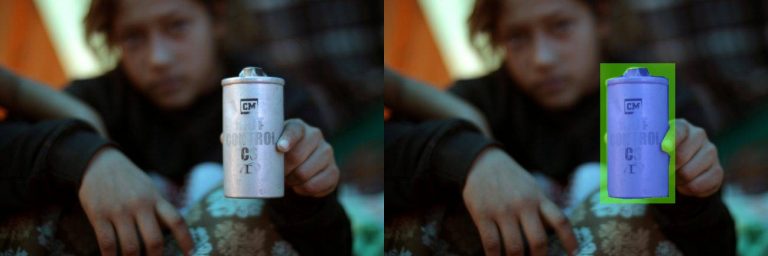- Research work in collaboration with Forensic Architecture.
- Developped a few shot detector for detecting tear-gas canisters in videos, for assisting human rights investigations.
- This project was exhibited at Uncanny Valley: Being human in the age of AI, at the de Young Museum in San Fransisco.
Challenge
- For CNN based object detection to work, a large amount of training data is required. This amount of data is not available for the task of detecting tear gas canisters.
- While traditional detectors suffer from overfitting when presented with small amounts of annotated data, the few shot detector is specifically designed to learn to generalise well from just a few examples of the object in question.
- I experimented training the few shot detector with as little as 10 images, up to 300 images of canisters, and experimented with data uagmentation via synthetic images.
Why This Matters
- Human rights investigations often require triaging large volumes of open source data in order to find moments within image, audio, or video that are relevant to a given investigation and warrant further inspection. Searching for images of tear gas online manually is laborious and time-consuming.
- This allows to automate discovery, identification, and archiving, which is hugely beneficial to human rights monitors.
- This project highlights how ML can be used for real-world applications, and how recent advances in ML can be leveraged for the greater good.

